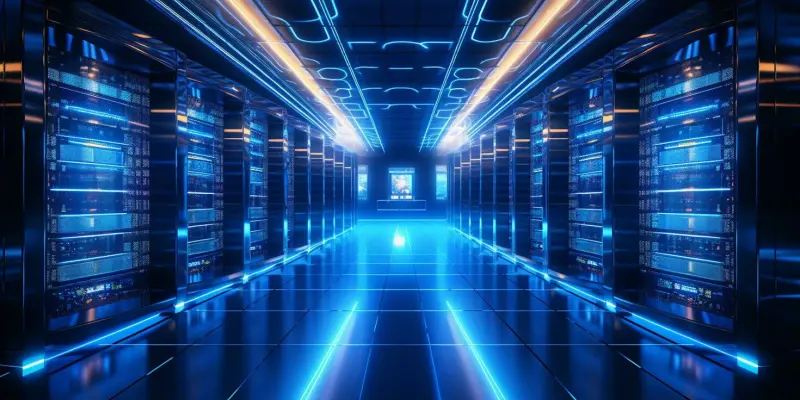In recent years, the explosion of data necessitated by digital transformation has amplified the need for scalable, efficient, and environmentally conscious data center operations. Given the exponential growth in demand for data processing and storage, it is crucial to address energy consumption and its environmental impact within data centers. Microsoft’s study, recently disseminated in Nature, delves into this issue, detailing the potential benefits of innovative cooling technologies for data centers. This includes strategies aimed at optimizing energy usage, cutting emissions, and minimizing water consumption, underscoring a balance between operational efficiency and ecological stewardship.
Cooling Technologies: A Comprehensive Evaluation
Assessing Energy Usage and Emission Reductions
At the core of this study is a rigorous evaluation of four key data center cooling technologies: air cooling, cold plates, one-phase immersion, and two-phase immersion cooling. While traditional air cooling remains prevalent, its environmental drawbacks highlight the necessity for alternatives. Notably, cold plates and immersion cooling methods are distinguished by their capacity to effectuate notable reductions in emissions and energy consumption. Specifically, these methods demonstrate potential for curbing emissions by 15-21% and energy usage by 15-20%. Such advancements are not merely incremental but represent meaningful strides toward sustainable data center operations.
Additional focus has been placed on cold plates and two-phase immersion cooling, both of which show immense promise in refining energy efficiency. These methods, touted for their precise cooling capabilities, efficiently direct thermal management efforts to CPUs, where the bulk of computing heat is generated. Importantly, immersion cooling submerges CPU components in non-conductive fluids, drastically improving thermal conduction compared to traditional air-based methods. However, two-phase immersion cooling is not without its challenges, as present concerns with PFAS substances necessitate consideration due to growing regulatory scrutiny. Despite these hurdles, optimizing the energy footprint of data centers remains an attainable goal.
Enhancing Water Efficiency and Environmental Stewardship
Sustainable water use is equally critical within the paradigm of advanced cooling technologies. The study points to the potential of cold plates and immersion cooling technologies to achieve significant water use reductions, with potential savings ranging from 31% to 52% compared to traditional methods. In environments often strained by limited water resources, such advancements hold profound implications for ecological balance and resource conservation. These technologies offer pathways to a thoughtfully integrated and holistic approach to data center management.
Efforts in enhancing water efficiency are congruent with the broader vision of fostering environmentally responsible computing infrastructure. While acknowledgment of the ongoing challenges associated with PFAS in two-phase immersion cooling persists, its promise underscores the need for innovative solutions to meet ecological targets. This trajectory points towards a future where data centers might operate with minimal groundwater impact, centralizing sustainability as a guiding principle within their operational ethos.
Unlocking Future Sustainability through Innovation
Strategic Future Paths for Data Center Operations
The implications of Microsoft’s study extend past current innovations into prospective advancements and strategic directions for future data center operations. Leveraging life cycle assessment tools appears to be an imperative step, encouraging decision-makers to integrate sustainability considerations from the onset of engineering decisions. This proactive stance towards environmental profiling alerts operators to not just the benefits of evolving cooling technologies, but also the trade-offs that need navigation for optimal outcomes.
With the continued adoption of 100% renewable energy sources, the research suggests that resultant greenhouse gas reductions could reach 90%, irrespective of the particular cooling technology applied. These findings emphasize the interconnectedness of energy sources and cooling methodologies in crafting a comprehensive sustainability strategy. By pursuing a synergy of renewable energy integration and efficient cooling mechanisms, operators can progress towards a sustainable data center model.
Balancing Innovation with Practicality
Despite the evident promise of these technologies, balancing cutting-edge innovation with practicality is vital. Operators must remain cognizant of the constraints imposed by existing technological frameworks and infrastructural capabilities. By weighing these realities against the ecological advantages gleaned through modern cooling technologies, informed choices can be made to ensure both sustainability and functionality.
Significantly, Teresa Nick, co-author of the study, advocates for a nuanced understanding of technology trade-offs, recognizing that while cold plates and immersion cooling methods exhibit substantial environmental benefits, their application must be contextualized within broader data center functionality. This consideration is especially relevant as global demands for energy-efficient, data-driven solutions continue to escalate in an increasingly digitized world.
Redefining Sustainable Data Center Practices
In recent years, digital transformation has led to an explosion of data, thereby highlighting the urgent need for scalable, efficient, and eco-friendly data center operations. As the demand for data processing and storage continues to grow substantially, it becomes crucial to tackle issues related to energy consumption and environmental impact within data centers. A study conducted by Microsoft, published in the journal Nature, explores this pressing matter, focusing on the potential advantages offered by novel cooling technologies in data centers. This research includes strategies that aim to optimize energy usage, reduce emissions, and decrease water consumption. The study emphasizes the importance of maintaining a balance between operational efficiency and environmental stewardship, suggesting that cutting-edge cooling solutions could play a significant role in achieving sustainable practices while meeting increasing processing needs. As the data landscape evolves, the findings could guide future innovations in data center operations.

